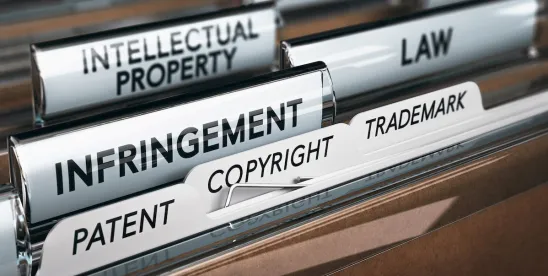In today’s business environment, intellectual property (IP) is often one of the most valuable assets a company can hold. From patents that protect breakthrough inventions to trademarks that safeguard brand identity, IP rights are increasingly treated like core assets that can be bought, sold, licensed, or even auctioned.
However, while IP transactions may look similar to deals involving tangible property, the legal and financial considerations are far more complex. Whether you are a startup with a single patent or a global enterprise with thousands of trademarks, understanding the market for IP has become as important as understanding your supply chain or customer base.
Why Intellectual Property Matters in Business
For investors, IP can serve as a signal of a company’s growth trajectory. Venture capitalists often look closely at how founders have protected their core innovations before funding rounds. In industries like pharmaceuticals, patents effectively define the commercial life of blockbuster drugs, while in software, trade secrets and copyright protection keep competitors from easily copying code. In short, IP can serve as both sword and shield in competitive markets.
As Mark Bloom of NSABP Foundation notes, “Some companies do not make or sell products; their entire revenue is derived from the licensing of their patents.”
This reality has made licensing revenue a cornerstone of the modern IP economy. Businesses acquire IP to strengthen their market positions, reduce risk, and invest in future opportunities. Others divest IP to monetize unused assets or quickly raise capital.
How Intellectual Property Transactions Work
The marketplace for IP is vast. Businesses may work through brokerage firms, which perform due diligence and help establish fair value, or turn to auctions, where assets go to the highest bidder. The structure of an IP deal can vary significantly. Some transactions involve outright assignments, where ownership transfers permanently, while others rely on licensing structures that provide ongoing royalty income. Hybrid models, such as cross-licensing between large technology companies, highlight that IP is not always about exclusivity, but about leveraging assets for mutual benefit. This makes negotiations more complex but also more flexible, allowing creative solutions tailored to the needs of each party.
But unlike physical property, IP comes with unique risks. As Fred Wilf of Wilftek LLC points out: “Intellectual property can quickly depreciate or even disappear via natural obsolescence.”
This risk means buyers must approach IP deals with rigorous diligence, examining not only ownership but also enforceability, licensing history, and future relevance.
Considerations by IP Type
Trade Secrets
Trade secrets can be among the most valuable assets in a portfolio. They include formulas, business strategies, or customer lists that derive value from remaining confidential. However, courts will only uphold trade secret status if the owner can demonstrate consistent efforts to protect the information. This places a premium on compliance, employee training, and well-drafted contracts. Businesses that neglect these measures risk losing protections entirely.
As John O’Malley of Volpe and Koenig, P.C cautions, “A trade secret only stays valuable if you can show you’ve taken reasonable steps to keep it secret.”
Patents
Patents remain the backbone of many technology-driven deals. Valuation factors include market size, technology relevance, and whether the patent family forms an ‘open chain’ with continuing applications.
Patents are also frequently litigated, making them both valuable assets and potential liabilities. A strong patent can deter competitors, but a weak or overly broad patent may invite costly legal battles. Buyers need to verify ownership, confirm maintenance fees are up to date, and check for pending applications that may expand the scope of protection.
As Mitchell Weinstein of Levenfeld Pearlstein puts it, “The claims of a patent determine the scope of coverage, and stronger claims provide wider coverage.”
Copyrights and Trademarks
Copyrights protect creative works, while trademarks secure brand identifiers such as names, logos, and slogans. Both require careful due diligence to confirm ownership, registration status, and whether the rights have been properly maintained. The digital economy has made these rights more complex. For example, music streaming platforms have transformed how royalties are managed, leading to frequent disputes over ownership and compensation. On the trademark side, the rise of e-commerce means that counterfeit goods can surface in almost any market, challenging companies to police their marks aggressively. Failure to do so can dilute brand value and erode consumer trust.
Important to note is that non-use of a trademark for even a limited time can lead to abandonment, wiping out its value. Buyers acquiring rights to copyright must verify that works are not in the public domain or improperly classified as derivative works.
Challenges and Risks in IP Deals
Unlike physical assets, IP value is inherently tied to several factors, including market conditions and legal interpretations. For instance, a patent tied to emerging technology may be worth little today but could become a billion-dollar asset if the technology takes off. Conversely, a sudden regulatory change could render the same patent worthless. Legal changes, such as the Supreme Court’s Alice decision, have reshaped the software patent landscape, while ongoing debate around the America Invents Act continues to influence litigation strategy. In many ways, the law is still catching up to the realities of innovation. Buyers and sellers alike must stay alert to these shifts, which can significantly affect value.
The Future of IP Transactions
Companies expanding internationally must understand how IP rights are recognized across jurisdictions. Some countries may not enforce trade secret protections as strongly, while others may impose unique registration requirements for trademarks or copyrights. As cross-border commerce evolves, advisors with multi-jurisdictional expertise will become indispensable.
Artificial intelligence promises to transform due diligence, enabling predictive analytics on patent portfolios and contract risk. As Bloom observes, “AI will fundamentally change the process of how lawyers practice law, leading to a new set of disruptions and new economic structures for law firms.” With automation and data-driven insight, the IP marketplace will likely become more dynamic, but also more competitive.
Final Thoughts
Intellectual property has become one of the most dynamic and valuable asset classes in the modern economy. Buying, selling, and licensing these rights requires more than a basic understanding of contracts; it requires strategic thinking that incorporates legal knowledge, financial analysis, and business foresight.
In the end, IP isn’t just a legal tool; it’s a business strategy. Companies that proactively manage and protect their IP portfolios not only reduce risks but also open the door to new revenue opportunities, partnerships, and competitive advantages.
To learn more about this topic view Buying and Selling IP. The quoted remarks referenced in this article were made either during this webinar or shortly thereafter during post-webinar interviews with the panelists. Readers may also be interested to read other articles about IP.
This article was originally published here.
©2025. DailyDACTM, LLC d/b/a/ Financial PoiseTM. This article is subject to the disclaimers found here.




 />i
/>i

